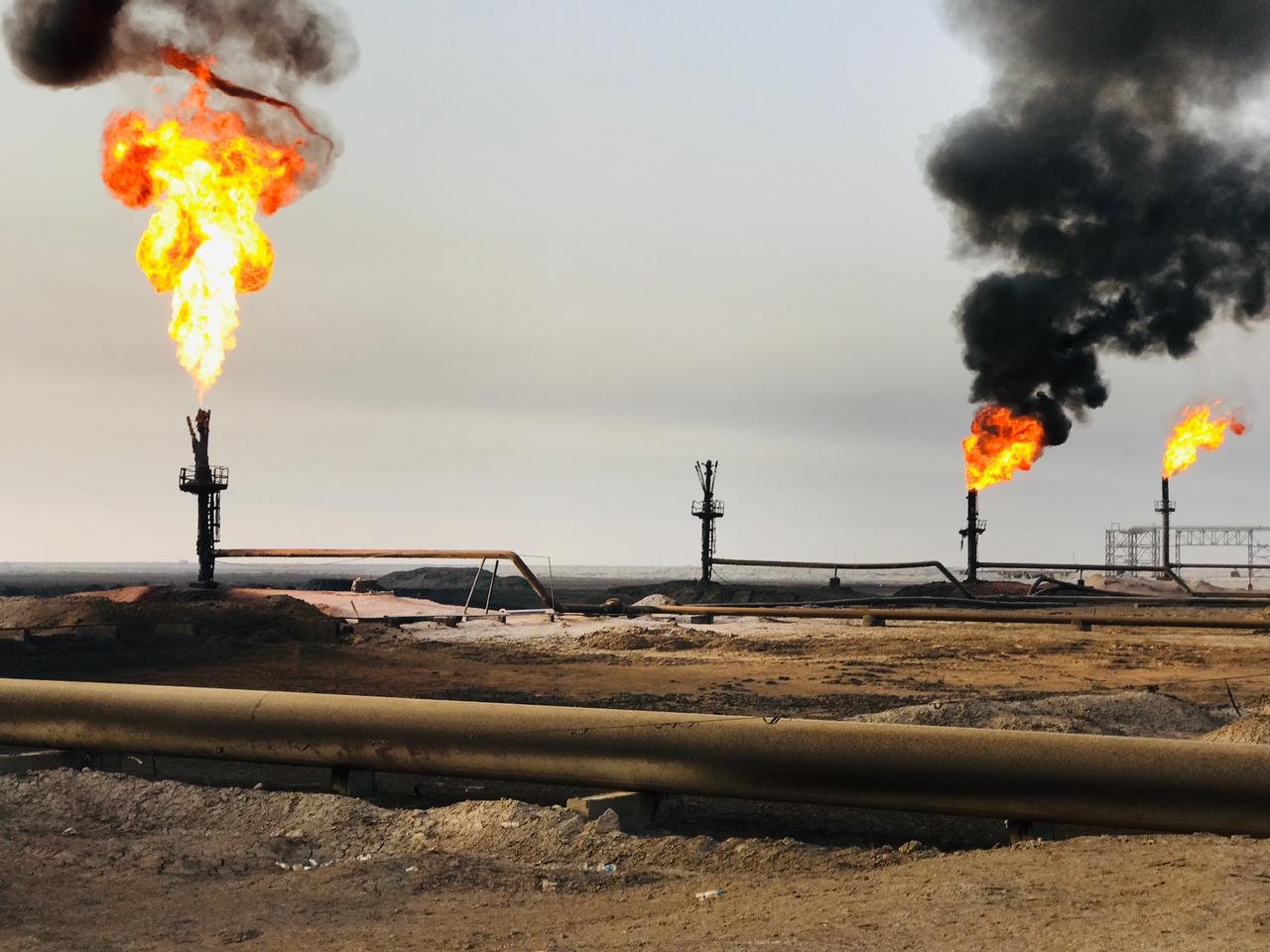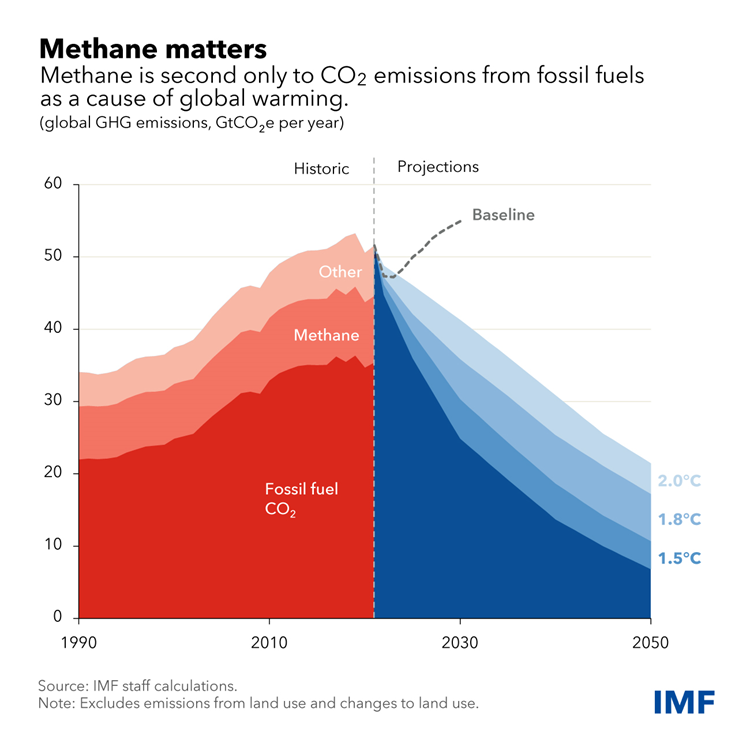
Methane Emissions and Gas Flaring
-

Overview
Globally, methane is a significant environmental concern, primarily due to its potent greenhouse gas properties. It has a warming potential over 25 times greater than carbon dioxide over a century. Methane emissions contribute to climate change, exacerbating severe weather events and posing serious health risks, including respiratory and cardiovascular issues.
-

Gas Flaring and Environmental Impact
Gas flaring, the burning of natural gas associated with oil extraction, released 357 million tonnes of carbon dioxide equivalents (CO2e) in 2022, with 42 million tonnes attributed to methane alone. Despite a 3% decrease in global gas flaring to 139 billion cubic meters (bcm) in 2022, oil production rose by 5% to 80 million barrels per day. Consequently, the global average flaring intensity dropped to 4.7 m³/bbl, down from 5.1 m³/bbl in 2021.
-

Zero Routine Flaring by 2030 Initiative
The Zero Routine Flaring by 2030 (ZRF) initiative aims to eliminate routine flaring of gas from oil production worldwide. Launched in 2015, this initiative encourages countries and companies to adopt strategies to prevent flaring, which could significantly enhance energy access and reduce greenhouse gas emissions. By eliminating routine flaring, the initiative not only mitigates methane emissions but also supports energy security and sustainability across regions reliant on fossil fuels.
Scope of the Methane Emissions Problem
-

Unchecked Greenhouse Gas Emissions
Over the last decade, oil and gas operators in the U.S. have flared at least 3.5 trillion cubic feet of natural gas, releasing greenhouse gas emissions equivalent to nearly 42 million cars driving for a year. Additionally, the industry has emitted unknown volumes of methane directly into the atmosphere through venting, exacerbating the climate crisis and posing serious environmental challenges.
-

Data Discrepancies
Regulators are largely unaware of the true extent of gas being flared and vented, as company-reported volumes differ dramatically from satellite observations. This data blind spot has developed due to limited federal oversight and a patchwork of lax state regulations, with four states maintaining little to no information on flaring and venting volumes. The lack of transparency makes it difficult to hold operators accountable for their emissions.
-

Methane's Potent Climate Impact
Methane, the primary component of natural gas, is 80 times more powerful than carbon dioxide at trapping heat in the atmosphere over a 20-year period. Reducing methane emissions is considered one of the fastest and most effective routes to mitigating climate change; however, the significant challenge lies in the lack of accurate data and monitoring, which hampers efforts to develop effective mitigation strategies.
The Need for Regulatory Action
-

Regulatory Shortcomings
Despite the scale of the problem, state and federal regulations are riddled with exceptions that allow continued flaring and venting. The Texas Railroad Commission, which oversees the nation's top-flaring state, has faced criticism for being too closely aligned with the industry it regulates, with commissioners accepting millions in campaign contributions from oil and gas interests, raising concerns about conflicts of interest and regulatory effectiveness.
-

Health Risks
Communities living near flaring sites face increased health risks. Research has shown a correlation between proximity to flares and health issues, including higher rates of preterm births, particularly among marginalized populations, emphasizing the need for better health impact assessments. Addressing these health disparities is essential for fostering safer living conditions in affected areas.
-

Path Forward
Tackling the issue of flaring requires improved data collection and regulatory enforcement. Investing in flare mitigation technologies can capture wasted gas, reduce environmental impacts, and promote sustainability in the oil and gas industry, ultimately benefiting both the environment and local communities. A proactive approach to managing flaring can lead to more responsible energy production and a healthier future for all.
Sustainable Solutions for Health and Efficiency
-

Reducing Flare Gas Pollution
Health Improvement: We actively reduce flare gas pollution to enhance public health, addressing harmful emissions that impact communities.
Elimination of Harmful Compounds: Our processes effectively eliminate Volatile Organic Compounds (VOCs), Unburned Hydrocarbons (UBHC), and Hydrogen Sulfide (H2S). Notably, UBHCs are classified as pre-cancerous chemicals, making their reduction crucial for community safety.
-

Efficient Waste Recycling
Beneficial Waste Management: ACE provides an efficient and practical equipment package for recycling waste, converting flare gas into usable energy.
Transition to Clean Energy: By shifting from polluting open combustion methods to efficient, clean-burning closed combustion systems, we produce clean energy while significantly reducing methane emissions.
-

Distributed Electrical Generation
Microgrid Solutions: Our approach promotes diverse and distributed generation, which minimizes the need for new power transmission lines. This allows for direct connections to existing electrical grids.
Cost and Energy Efficiency: By eliminating additional transmission requirements, we reduce wasteful electrical line losses, ensuring that energy is delivered more efficiently.
Our Solution: Alpha Clean Energy
At Alpha Clean Energy, we are dedicated to transforming the energy landscape through sustainable practices and cutting-edge technology. By harnessing waste resources and reducing harmful emissions, we are not only improving public health and environmental integrity but also fostering economic growth and energy independence. Join us in our mission to create a cleaner, more efficient energy future for all.
Reducing flare gas pollution to improve public health.
Eliminating Volatile Organic Compounds (VOCs), Unburned Hydrocarbons (UBHC), and hydrogen sulfide (H₂S). Notably, UBHCs are classified as pre-cancerous chemicals.
Implementing an efficient, practical equipment package for beneficial waste recycling.
Promoting Diverse/Distributed Generation, which minimizes the need for new power transmission lines. This strategy allows for direct connections to existing electrical grids, reducing the wasteful losses associated with additional transmission infrastructure.

